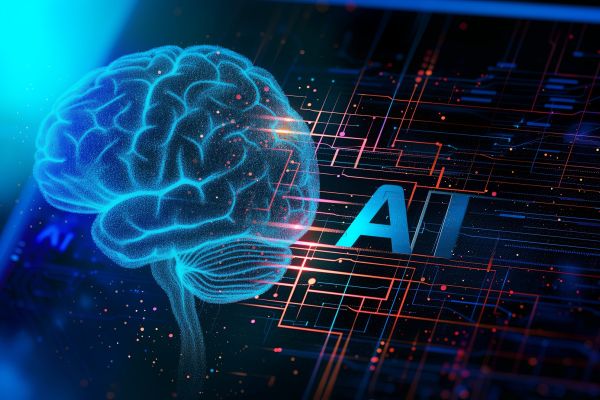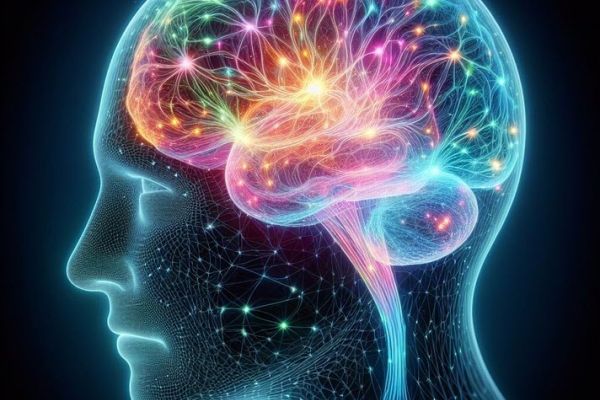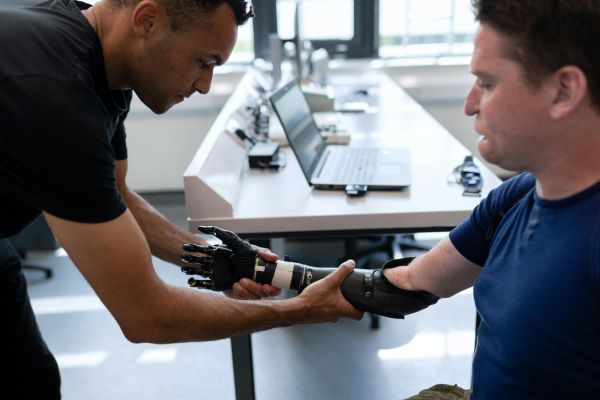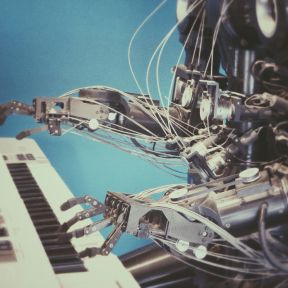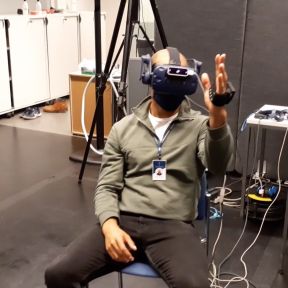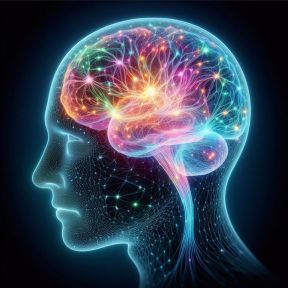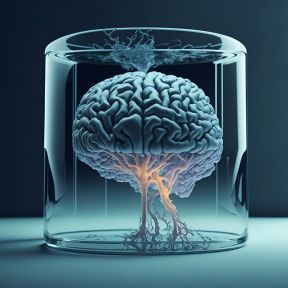
Brain Computer Interface
A brain computer interface (BCI) is a neural device that translates a person’s brain activity into external responses or directives. For example, a BCI can allow someone who is paralyzed to direct a prosthetic limb with their thoughts by envisioning moving the limb. BCIs currently have important applications for treating neurological disorders and other conditions—and researchers are working to create non-invasive devices that can read and write neural code.

The idea of a brain and a computer fusing together can be mind-boggling. Controlling robots with thought alone? Transmitting information from one person to another via computer rather than speech or writing? Understanding the history, science, and ethics of BCIs can help explain this technology.
Although brain computer interfaces sound futuristic, iterations of the technology have been researched and practiced for decades. Electroconvulsive therapy, in which electricity is used to induce seizures to treat mental illness, has existed since the 1930s and is still used to treat severe depression. Cochlear implants, surgically implanted devices that convert sound into electric impulses and activate the auditory nerve to produce sound, were introduced in the 1970s and now aid hundreds of thousands of people with hearing loss. Deep brain stimulation, in which electrodes implanted in the brain moderate activity to treat Parkinson’s disease and other conditions, was approved by the FDA in 2002. Now the technology is expanding to include increasingly complex, bidirectional relationships between mind and machine.
There are many versions of BCI technology; information can be delivered to or extracted from the brain. When thinking about prosthetics, for example, a computer learns to interpret a person’s neural activity through patterns of chemical and electrical signalling. The computer then responds to a particular pattern of activity by sending directives to an external device. So a person would imagine picking up a cup of water, the computer would learn to identify that neural pattern, and eventually that pattern would initiate a robotic arm to locate, grasp, and raise the cup of water to the person’s mouth.
There are both invasive and noninvasive BCI technologies. BCIs that control prosthetic limbs or identify and treat seizures, for example, operate via electrodes that are surgically implanted in the brain. But other BCIs rely on non-invasive brain readings, such as by an electroencephalography (EEG), which places electrodes on the scalp via a cap that can easily be applied and removed. A novel example of a non-invasive BCI is the stentrode device, in which electrodes enter the body through the bloodstream.
The emergence of BCIs has raised plenty of ethical questions, around topics such as autonomy and agency, privacy and security, consent, equity, biases in artificial intelligence, and potential threats posed by hackers or those controlling BCI devices in the medical, corporate, and political realms. The field of neuroethics studies the ethics of neuroscience, including the ethics of BCI technology.

Brain computer interfaces have been providing, and will continue to provide, critical applications in medicine. They can help people with paralysis, amputation, and a host of neurological disorders such as Parkinson’s disease, ALS, and epilepsy; BCIs can help restore movement and communication to those with impairments. BICs are already helping many people; deep brain stimulation, for example, treats Parkinson’s disease, depression, OCD, and other conditions.
The potential to communicate with one another via computer—mind reading, essentially—naturally has applications for a wide array of domains, including education, national security, marketing, entertainment, and wellness.
BCIs have applications for any condition that involves movement or communication impairments, because the interface could signal their intentions to a machine that could carry out those functions, as well as conditions that involve monitoring or correcting abnormal brain signaling. Conditions include paralysis, amputation, brain injury, stroke, epilepsy, dementia, ALS, cerebral palsy, Down’s syndrome, Huntington’s disease, vocal cord damage, mouth or throat cancer, Parkinson’s disease, hearing loss, and other medical and developmental disorders.
In one recent study, researchers used artificial intelligence to create a system that reads a person’s brain signals and generates novel images of their thoughts. In another, researchers used artificial intelligence and brain computer interface technologies to learn and then generate faces that people view as beautiful.
One notable company working on brain interfaces is Neuralink, founded by Elon Musk and others in 2016. The company is developing interfaces to treat neurological disorders, and they eventually hope to create new relationships between mind and machine—although there is plenty of skepticism around the company’s initiatives and goals.
Many companies have entered the BCI space, including Kernel, Neurable, Emotiv, Cognixion, Paradromics, Halo Neuroscience, MindMaze, Q30 Innovations, BIOS, NeuroPace, Neurosky, Cerêve, Inc., MELTIN MMI, Dreem, 4DForce GmbH, BrainCo, Inc., Neuros Medical, NextMind, NeuroLutions, Synchron, Flow Neuroscience, Bitbrain Technologies, NeuroScouting, Thync, InteraXon Inc., and BrainRobotics, among others.
The brain computer interface industry is an emerging market that is growing quickly. By 2022, the BCI market will increase to $1.72 billion globally according to a report published last year by Grand View Research, a market research company. The main market segments for brain computer interface include healthcare, education, military, esports and gaming.
